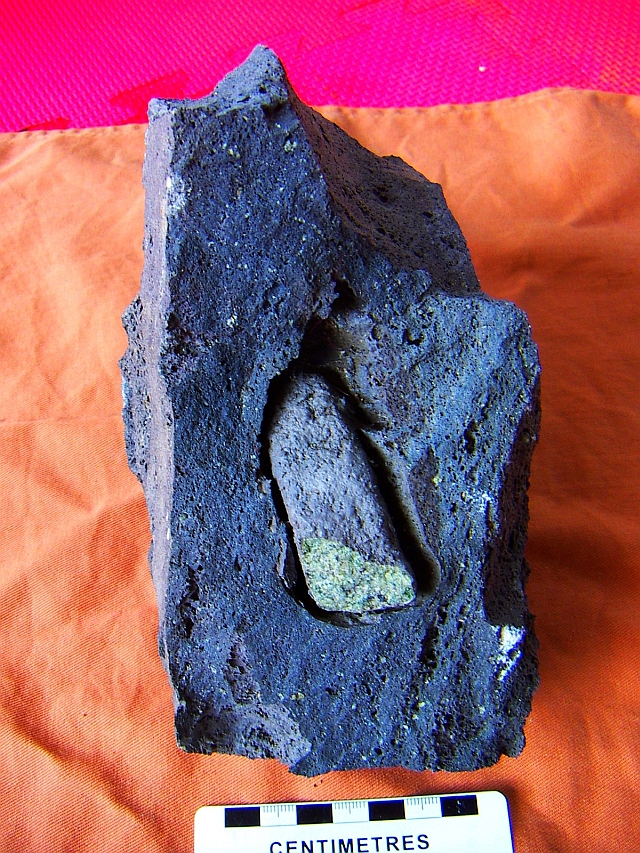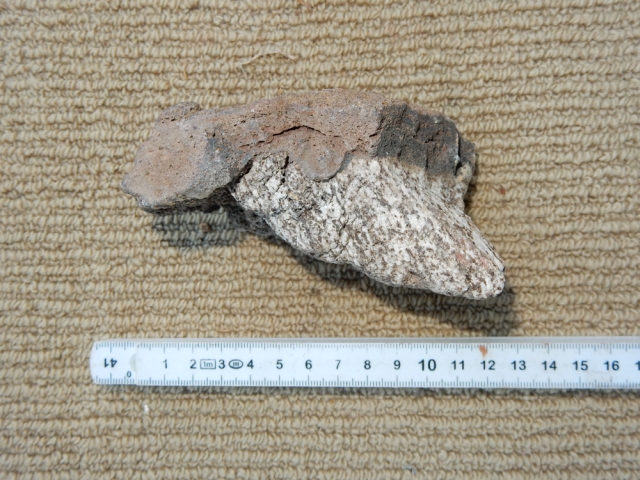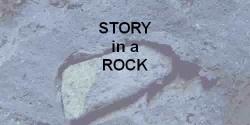Xenoliths - Hitchhikers from the Deep
Xenoliths - hitchhikers from the deep
A Xenolith tells it's story.
A xenolith is a piece of rock picked up and carried along within a
lava or magma which was not part of the original magma but has been
introduced from elsewhere, either at depth or especially the surrounding
solid country rockThe greenish rounded rock in the middle of the image below is a piece of a rock called peridotite that has been chipped off and carried upwards by the black surrounding rock made of basalt lava.

Peridotite xenolith ( a piece of the upper Mantle) in basalt lava
The Crust of the Earth is the solid rock we live on and is about about 30 to 50km thick.
Beneath this is the Mantle. The Mantle is about 2900km thick and make up about 84% of the earth's mass.
My Story - the Xenolith
That piece of rounded greenish rock is me a piece of Peridotite,
a "hitchhiker from the deep earth" - I come all the way from the Upper
Mantle - that is a region starting at the bottom of the
Crust an continuing to a depth of about 400km.Much of the time the enormous pressure on the Upper Mantle of the overlying rocks tens of kilometres of rock keeps it squeezed together as a solid. But if the pressure is released (via a crack or movement in the crust) the Mantle turns to liquid.
So how did I get from so deep in the earth all the way to the surface - I hitchhiked!
Since liquids are lighter (less dense) than the surrounding solid rock , the liquified rock, being lighter, will move upwards if it can find a pathway either some of the way or all other the way to the surface.
This is the process "powers" volcanoes and magma intrusions, not "secret pumps" but just lighter stuff moving on top of heavier stuff - simple!
The mantle is thought to be primarily composed of ultrabasic rocks (rocks rich in magnesium and iron, and poor in silica; mostly peridotites).
The liquid rock is called magma when it is beneath the surface and lava when it reaches the surface.
How did I pick up a ride to the surface?
On the magma's upwards journey it broke me off, piece of solid rock and carried me all the way to a volcanoe where I came out surrounded by basalt lava.
Most magmas (molten rock) are generated in the Upper Mantle (measured from the base of the crust down to 400 km).
Though we rarely see Upper Mantle rocks they comprise about 10 % of the Earth's total mass. So a "hitchhiker" like me is very special like a deep sea diver bringing up treasure. Xenoliths like me give people a valuable look at the rocks found at very great depths in our planet.
The Upper Mantle's Composition: mostly Peridotite (made up of the minerals olivine + pyroxene) but there is even more we can learn from xenoliths...
Additional minerals in the peridotite can tell us about how deep the rock came from:
- the addition of the mineral plagioclase tells us the peridotite originates at < 30 km depth
- the addition of the mineral spinel tells us the peridotite originates between 30 km - 70 km depth
- the addition of the mineral garnet tells us the peridotite originates at > 70 km depth)
- in tectonically active regions, eclogite (amphibole + garnet) is a major component of the peridotite
I am rounded and surrounded by a hollow around because the red hot basalt lava (at 1200 degrees celsius) has been trying without success to melt me all up! But I am a pretty tough rock!
Another example of a xenolith is shown below:
In this case the light coloured piece of rock is a xenolith of the intrusive rock gneiss stuck to a lava bomb that has been thrown out of a volcanoe.

Learn More about PLATE TECTONICS and PLATE TECTONICS / HOT SPOTS

